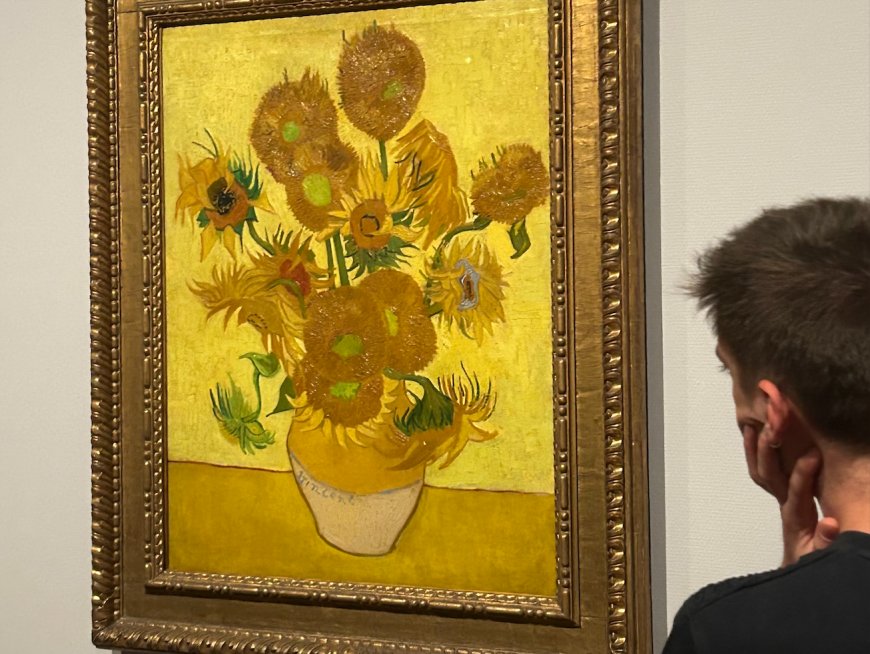What the Van Gogh Museum taught me about the artist’s queer past
A recent trip to Amsterdam led me to the vibrant, comprehensive, and surprisingly queer-coded Van Gogh Museum.


Between frequenting coffee shops, cautiously exploring the Red Light District, and biking down cobblestone streets, dodging pedestrians, a recent trip to Amsterdam led me to the vibrant, comprehensive, and surprisingly queer-coded Van Gogh Museum.
Located on Museumplein, near the Rijksmuseum and the Stedelijk Museum, the building houses the world’s largest collection of Vincent van Gogh’s paintings and drawings, holding the rightful title of one of the Netherlands’ most-visited museums.
It’d be an understatement to call the post-Impressionist Dutch painter one of the country’s most famous exports. His bright, imaginative colors, and let’s be real, kind-of-sexy self-portraits were some of the earliest masterpieces I remember being exposed to.

Pack your bags, we’re going on an adventure
Subscribe to our weekly newsletter for the best LGBTQ+ travel guides, stories, and more.
Subscribe to our Newsletter today
OK, to be fair, any mention of The Starry Night — one of van Gogh’s most famous paintings — was notably absent, probably since it’s owned by the Museum of Modern Art in New York. Do we think there’s drama?!
That said, the collection is worth the price of admission, featuring works like Sunflowers, Bedroom in Arles, The Potato Eaters, and van Gogh’s final painting, Tree Roots, as well as other pieces he was inspired by and influenced. (The floral-themed cafe and its expansive and inescapable gift shop are not to be missed, either.)


Of course, the painter’s impact is undeniable, but his story is tragic. The museum stresses how he struggled to find success during his lifetime and the pivotal role his sister-in-law, Johanna van Gogh-Bonger, played in popularizing his art after he took his life at 37.
One wall even charts a timeline of the mental health struggles that often informed his art.


While there’s so much we’ll never understand about van Gogh’s life, I was interested to learn upon further research that medical biographers believe he experimented with “hypersexuality, hyposexuality, bisexuality, and homosexuality” in his adult years.
That said, I’m not entirely surprised.
If there’s one thing I took away from the impressive display, it’s that the man loved flowers — and a splash of color.
“The Painter of the Sunflowers”

One of the most interesting paintings was not by the Dutch artist, but by his friend, French painter Paul Gauguin.
The Painter of Sunflowers portrait depicts Vincent working on his Sunflower series during a two-month period when van Gogh and Gauguin were living together in Arles, France. (Interestingly enough, the latter was financially supported by van Gogh’s brother, Theo, at the time.)
Related
From queer AF hoods to eco-chic, Amsterdam owns it
What’s old is new again in Amsterdam, where LGBTQ+ visibility converges with responsible urban development.
As I later learned, historians speculate the two artists had a physical and emotional relationship, which would explain their frequent and fiery arguments — including the one that led van Gogh to cut his ear off and Gauguin to leave Arles for good.
“Everything considered, I am obliged to return to Paris,” he wrote in a letter to Theo. “Vincent and I simply cannot live together without trouble, due to the incompatibility of our characters, and we both need tranquility to work.” Sounds a little gay to me!
While the two never reunited, they communicated via letters until van Gogh’s passing. The artist later reflected on Gauguin’s painting as “indeed me, extremely tired and charged with electricity as I was then.” And weeks before his death, he wrote to Gauguin: “I’ve thought about you every day.”
Maybe more happened in the infamous Bedroom — painted during van Gogh’s stay in Arles — than we’ll truly ever know.

Join the GayCities newsletter for weekly updates on the best LGBTQ+ destinations and events—nearby and around the world.

 Mark
Mark 





